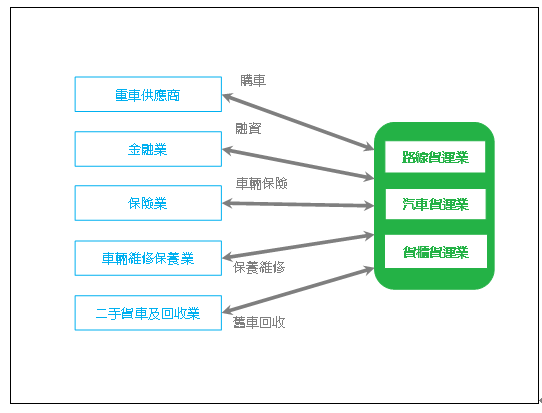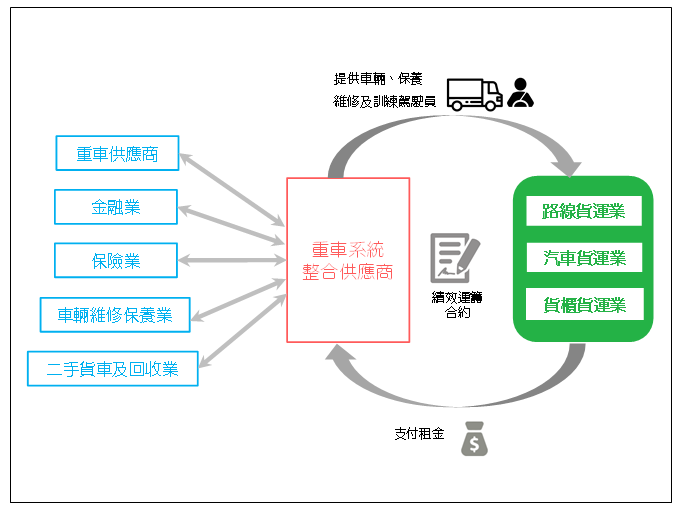Increase the competitiveness of the freight industry - Introduce Performance-based Logistics Model
- Date:2019-03-06
- Update:2019-03-06
- Department:IOT
Project Overview:
As a key logistics service industry carrying more than 95% of the domestic inland transportation cargo volume, the highway freight trucking industry is essential to develop multi-innovative and flexible operations model in line with international trends. Large truck leases in Europe and the United States have been available for many years, and Performance-based Logistics has been adopted in recent years to convert simple truck purchases or leases into lease contracts with “large truck operation performance” as the subject of transaction. Since the operating vehicle is an important asset for the freight forwarder, if the vehicle can be leased under Performance-based Logistics, the vehicles can improve their performance, reduce failure rates and ensure safety within the reasonable duration of service that will enable the transportation vehicles of freight forwarder to achieve higher productivity and operational flexibility to enhance the competitiveness of the overall freight industry. For the freight industry to introduce Performance-based Logistics for its vehicles, in addition to help the freight forwarder reduce cost and improve efficiency. Since it is performance-oriented, the vehicle suppliers will continue to improve vehicle maintenance and repair and reduce costs which can indirectly reduce carbon emissions and contribute to the policy objectives of energy conservation and carbon emission reduction to advance sustainable development of the country.
Research outcomes:
(1)This research uses the tractor as the example for trial calculation that shows Performance-based Logistics can improve operating efficiency and reduce cost for the freight forwarder, thus assist industrial upgrading and achieve the comprehensive effect of energy conservation and carbon emission reduction.
(2)Regarding the legal aspect of this system, the law must allow freight forwarders to use leased trucks for their business activities. In addition, relevant vehicle licenses, vehicle import tariffs, old vehicle export tax rebates and insurance systems must also be revised in coordination in order to facilitate the successful introduction of Performance-based Logistics.
(3)In addition to the aforementioned legal system that must be made available, it is also necessary for freight forwarders and vehicle suppliers to share their vehicle related information through an information platform based on mutual trust, to facilitate the establishment and implementation of Performance-based Logistics contracts.
Promotion of Outcomes and Benefits:
(1)Completed the manuscript of the "Development Subject for the Status of Domestic Trucking Freight Industry and Truck Supply Chain", and published it in the February 2018 issue of the CVNews.
(2)Between July and September of 2017, 18 freight forwarders and vehicle supply providers were interviewed in depth to understand the status of freight and vehicle supply in Taiwan, and exchange ideas on the introduction of Performance-based Logistics. In September 2017, this Institute invited freight forwarders and automobile manufacturers for exchanges on the issues of the development status of using Performance-based Logistics at home and abroad, international benchmark cases and legal frameworks.
(3)In December 2017, the Institute was invited to participate in the 2017 Sweden Day, and exchanged ideas with the Taiwan branch of Scania on the introduction of Performance-based Logistics to the freight industry of Taiwan.
(4)Between June and September of 2018, this Institute conducted planning to interview the freight forwarders to conduct the achievement promotion to enhance the understanding and build consensus of the Performance-based Logistics.









